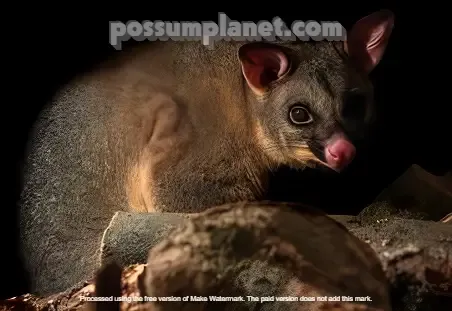.webp) |
Possums, once charming nocturnal creatures, have become a significant concern in New Zealand, wreaking havoc on the country's unique ecosystems. Controlling possum infestation is crucial not only for environmental preservation but also for safeguarding public health. In this comprehensive guide, we'll explore the intricacies of possum behavior, the environmental consequences of their presence, legal implications, and effective control methods.
Introduction
A. Brief Overview of Possum Infestation in New Zealand
New Zealand's idyllic landscapes are under threat from an unexpected source—possums. Originally introduced for their fur, these marsupials have multiplied exponentially, causing widespread damage to native flora and fauna.
B. Importance of Controlling Possums
Beyond the aesthetic concerns, possums pose a serious threat to the environment and agriculture. Effective control measures are essential to mitigate the adverse effects and restore ecological balance.
II. Understanding Possum Behavior
A. Nocturnal Habits
Possums are primarily nocturnal, making them elusive and challenging to manage. Understanding their activity patterns is crucial for effective control.
B. Dietary Preferences
Possums have a varied diet, including native plants and birds' eggs. This diverse palate contributes to their impact on New Zealand's ecosystems.
C. Reproductive Patterns
Possums are prolific breeders, compounding the challenge of controlling their population. Exploring their reproductive behavior helps formulate effective control strategies.
III. Impact on the Environment
A. Threats to Native Flora and Fauna
Possums pose a significant threat to New Zealand's unique biodiversity, consuming native vegetation and outcompeting indigenous species.
B. Spread of Diseases
In addition to habitat destruction, possums can carry diseases, further jeopardizing the health of local ecosystems.
IV. Identification of Possum Infestation
A. Signs of Possum Presence
Recognizing the signs of possum activity is crucial for early detection and intervention.
B. Common Areas of Infestation
Possums are adaptable, but certain environments are more prone to infestation. Identifying these areas aids in targeted control efforts.
V. Environmental Consequences
A. Deforestation and Habitat Loss
The unchecked possum population contributes to deforestation and habitat loss, endangering native species.
B. Impact on Agriculture
Possums can wreak havoc on crops and pose a threat to New Zealand's agricultural sector. Understanding these consequences is vital for effective control.
VI. Legal Implications
A. Regulations Regarding Possum Control
New Zealand has stringent regulations in place to control possum populations. Understanding these regulations is essential for compliance.
B. Penalties for Non-Compliance
Failure to adhere to possum control regulations can result in significant penalties. Awareness of legal consequences encourages proactive measures.
VII. Effective Control Methods
A. Trapping and Removal
Trapping remains one of the most effective methods for controlling possum populations. Proper techniques enhance success rates.
B. Poison Baiting
Chemical control methods, such as poison baiting, have proven effective but require careful implementation to minimize collateral damage.
C. Biological Control Measures
Exploring natural predators and biological control agents provides a sustainable approach to managing possum populations.
VIII. DIY Possum Control Tips
A. Securing Trash Bins
Simple steps, such as securing trash bins, can deter possums from venturing into residential areas.
B. Tree Trimming and Vegetation Management
Proactive vegetation management reduces possum-friendly environments, limiting their impact.
C. Fencing Solutions
Implementing strategic fencing solutions is an effective way to protect gardens and agricultural areas from possum intrusion.
IX. Collaborative Community Efforts
A. Importance of Community Involvement
Creating awareness and fostering community involvement are crucial components of successful possum control.
B. Local Initiatives and Programs
Highlighting successful community initiatives inspires others to take proactive measures against possum infestation.
X. Hiring Professional Pest Control Services
A. Benefits of Professional Assistance
Professional pest control services bring expertise and efficiency to possum control, ensuring a comprehensive approach.
B. Choosing the Right Pest Control Company
Guidelines for selecting a reliable pest control company help property owners make informed decisions.
XI. Prevention Strategies
A. Regular Property Inspections
Regular inspections help identify and address potential possum entry points, preventing infestation.
B. Educational Awareness Programs
Educational initiatives raise awareness about possum behavior and the importance of proactive prevention.
XII. Balancing Possum Control with Conservation
A. Ethical Considerations
Striking a balance between possum control and conservation efforts requires ethical considerations.
B. Promoting Biodiversity
Implementing control measures that prioritize biodiversity fosters a healthier ecosystem.
XIII. Success Stories
A. Examples of Communities Effectively Managing Possum Infestation
Exploring success stories provides inspiration and practical insights for other communities facing similar challenges.
B. Positive Environmental Outcomes
Highlighting positive outcomes showcases the tangible benefits of effective possum control.
XIV. Future Prospects
A. Advancements in Possum Control Technology
Keeping abreast of technological advancements offers hope for more efficient and humane possum control methods.
B. Ongoing Research and Development
Investigating ongoing research ensures a proactive approach to evolving possum control strategies.
XV. Conclusion
A. Recap of Key Points
Possum infestation is a multifaceted issue with far-reaching consequences. Addressing it requires a combination of individual and community efforts, legal compliance, and embracing innovative control methods.
B. Encouragement for Proactive Possum Control
Encouraging readers to take an active role in possum control reinforces the importance of collective responsibility for environmental preservation.
FAQs
Can possums be relocated once caught?
- While relocation is an option, it's essential to follow legal guidelines and consider the possum's well-being.
Are all possum control methods safe for pets?
- Some methods, like poison baiting, may pose risks to pets. Consult with professionals for pet-friendly alternatives.
What are the long-term effects of possum control on ecosystems?
- Striking a balance between control and conservation aims to minimize negative impacts on ecosystems.
Do possums carry diseases that can affect humans?
- Possums can transmit diseases. Proper handling and disposal of carcasses minimize the risk of infection.
How can communities collaborate effectively for possum control?
- Engaging in community initiatives, sharing knowledge, and participating in local programs strengthen collaborative efforts.

.webp)
